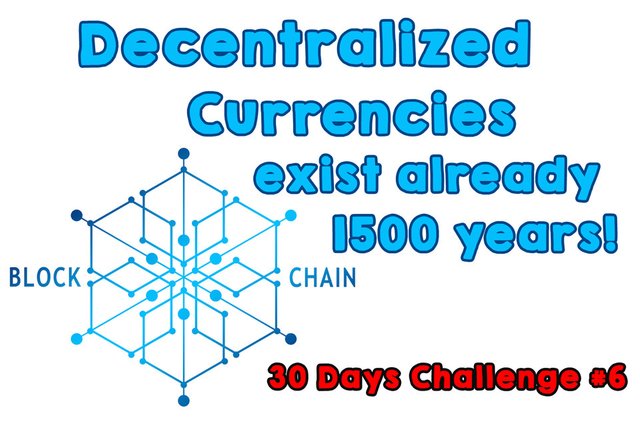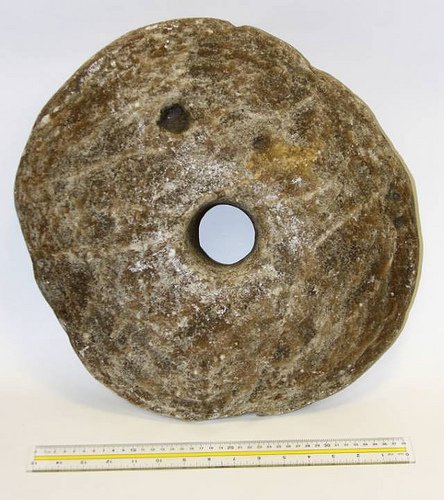Decentralized monetary systems have been around for 1500 years! | 30 Days Challenge #6

One could say that decentralised monetary systems are a phenomenon of the modern age and have begun with the bitcoin. In my investigations, however, I discovered that this is not true. To get to the beginning of decentralized currencies, you have to travel back a long way in history.
Stone money in the Yap Islands
It is believed that on the Yap Islands in Micronesia (Pacific Ocean) decentralised stone money has been used as a means of payment since 500 AD: The so-called Rai stones. These stones had a size of a palm up to four meters in diameter and sometimes weighed up to five tons! Due to this enormous weight, transporting the stones was extremely difficult and impractical.
Therefore, the stones were usually left in the place where they were once placed. Even if the owner of the stones has changed! Those who owned which stone were collectively and decentrally remembered by the population.

Of course, also these stones had to be mined somewhere!
Interestingly, these stones are not found in the Yap Islands themselves. So there was a natural shortage. They had to be procured from an island about 400 kilometers away. The journey was very long and dangerous for a long time, which of course also affected the value of each stone. In addition to transport, there were many other factors that determined the value of a particular stone, such as size, beauty, social status of the involved participants and so on.
An Irishman came and caused inflation
The romantic story of the Rai stones came to an end when the Irishman David O' Keefe came to the island. This smart businessman set up a trading company that ensured fast and safe transport of the stones. He traded the stones for copra. This is the dried meat of the coconut, which could also be used for oil production. He then sold to Hong Kong and earned a golden nose for it. The Yap Islands were flooded with Rai stones and lost value as a result.
An example to understand modern, decentralized currencies
The Rai stones are a prime example of decentralised currency systems. So there was no bank that could have regulated the amount of stones. The population reached a consensus, so an agreement on who owned which stone, by means of collective agreements. Stones which have sunk into the sea during the crossing were also recognized as valid currency. Because everyone thought that the stone still existed, even if you can't see it anymore.
Let's see if crypto currencies will succeed in preventing an end like the Yap Islands with a programmed maximum amount of money (e.g. there will only be 21 million bitcoins). The signs of the times do not speak for it. Because with the possibility of a hard fork (see Bitcoin Cash and Bitcoin Gold) this barrier has already been overcome in my opinion.
30 Days Challenge
This month I will publish an article about the Blockchain every day, providing useful and informative information on the one hand and providing insights into my learning process on the other. I love the Blockchain and would like to help you to make your potential visible and to carry it into the masses. The previous articles are linked below:
Day 1: Road to becoming a Blockchain-Expert
Day 2: The Blockchain offers a whole new way of making value visible
Day 3: The EMOTIONAL Aspect of Cryptotrading
Day 4: My Trading Strategy in the Cryptosphere
Day 5: Price Forecasts are Shit and delude the real important Questions
That's it for today again. I hope I could inspire you with my article in some way. If you have any questions or if you think about a topic that I could work on in an article in the next few days, then I am very grateful to you if you get in touch with me.
Of course I'd appreciate every Upvote and Resteem!
See you ;-)

Very interesting research :) Resteemed!
thank you !! ;)